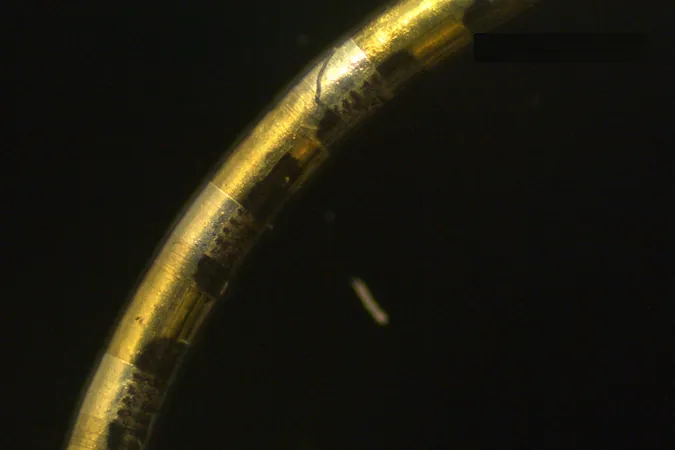
Shocking Discovery: Bending Ice Generates Electricity, May Unlock Secrets of Lightning!
2025-09-15
Author: Wei
Ice's Surprising Electrical Potential
Imagine ice doing more than just chilling your drinks—according to a groundbreaking study published in Nature Physics, it can actually generate electricity! Researchers from prestigious institutions, including the Catalan Institute of Nanoscience and Nanotechnology (ICN2), Xi’an Jiaotong University, and Stony Brook University, have revealed that ordinary ice possesses a hidden flexoelectric property that allows it to produce an electric charge when bent or twisted.
From Ice to Electricity: The Flexoelectric Phenomenon
Dr. Xin Wen, the lead researcher, emphasized, "We discovered that ice generates electric charge in response to mechanical stress at all temperatures." While many are familiar with piezoelectricity—where materials like quartz produce an electric charge under pressure—ordinary ice, or ice Ih, doesn't fit that mold due to its crystalline structure. Polar water molecules usually cancel each other out, leaving ice non-piezoelectric.
However, this study introduces us to flexoelectricity, where bending ice creates uneven stress. One side is compressed while the other is stretched, triggering polarization without needing precise atomic alignment.
Revolutionary Experiments With Ice Capacitors
To explore this phenomenon, scientists constructed 'ice capacitors'—thin layers of ice sandwiched between metal electrodes—and subjected them to bending. Remarkably, they detected measurable electric charges across all temperatures, from frigid -130 °C to melting point! These findings align with previous observations of electric charges in ice during thunderstorms.
Unveiling the Mystery of Lightning Formation
For decades, scientists have grappled with the enigma of lightning formation within clouds. While collisions between ice crystals and hail particles were known contributors to charge separation, the absence of piezoelectric properties in ice left many questions unanswered. This new research provides fresh insights: as these particles collide, they bend and deform, potentially creating the flexoelectric polarization needed to generate electric fields. This could explain how charge separation occurs in storm clouds!
Ice’s Dual Power: Flexoelectric and Ferroelectric Properties
The research unveiled another fascinating twist—at temperatures below -113 °C, the surface of ice becomes ferroelectric. This state can hold stable electric polarizations, which can flip under an external electric field, leading to two distinct ways ice can generate electricity.
Future Innovations: Ice as an Energy Source?
Beyond its role in weather phenomena, this discovery could revolutionize technology. The flexoelectric effect displayed by ice rivals that of ceramics commonly used in capacitors and sensors. This sparks exciting possibilities for developing low-cost, temporary electronics that function effectively in extreme cold, suggesting a future where ice itself could power innovative devices and sensors in polar regions.




 Brasil (PT)
Brasil (PT)
 Canada (EN)
Canada (EN)
 Chile (ES)
Chile (ES)
 Česko (CS)
Česko (CS)
 대한민국 (KO)
대한민국 (KO)
 España (ES)
España (ES)
 France (FR)
France (FR)
 Hong Kong (EN)
Hong Kong (EN)
 Italia (IT)
Italia (IT)
 日本 (JA)
日本 (JA)
 Magyarország (HU)
Magyarország (HU)
 Norge (NO)
Norge (NO)
 Polska (PL)
Polska (PL)
 Schweiz (DE)
Schweiz (DE)
 Singapore (EN)
Singapore (EN)
 Sverige (SV)
Sverige (SV)
 Suomi (FI)
Suomi (FI)
 Türkiye (TR)
Türkiye (TR)
 الإمارات العربية المتحدة (AR)
الإمارات العربية المتحدة (AR)